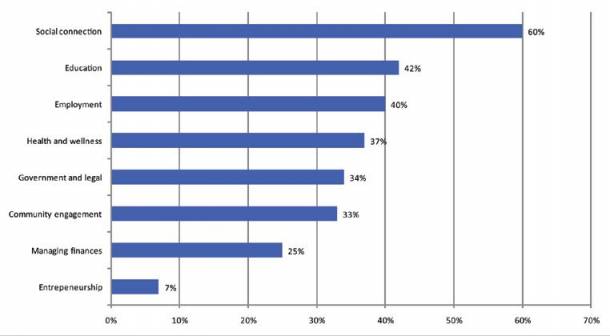Nearly 15 years ago, libraries were still primarily a place to go check out the printed, bound word. Only 28% offered Internet access, whereas today, almost all public libraries offer access and are helping to bridge the digital divide, according to a report by the University of Washington on Internet use in libraries across the country.

According to the report, “The wiring of public libraries has transformed one of the nation’s most established community resources into a critical digital hub”.
Every year, 169 million people visit their local public library and 45% of them access the Internet, according to the report. The report, which focuses on the numbers of people 14-years old and older, is based on nearly 50,000 surveys from patrons of more than 400 public libraries across the country.
As Seth Godin pointed out last January, libraries “can’t survive as community-funded repositories for books that individuals don’t want to own” and that the “number one thing they deliver to their patrons is free DVD rentals.”
Now, we can add “Internet access” to the top of the list, as “Internet access is now one of the most sought after public library services,” according to the report.
The report notes that patrons use the Internet for a variety of tasks – from job searches to civic participation to finance to school kids doing their homework – but offers an interesting stat right off the bat: Of those people using the Internet at the library, “more than three-quarters of these people had Internet access at home, work, or elsewhere.”
The library, it would seem, offers a respite from the coffee shop, a refuge from familial fights over the single home computer and an alternative to the dizzyingly slow dial-up Internet that so many still have to deal with. But what are they doing with this new found Internet provider?

Another telling number was that 60% of respondents said they use library computers to maintain “social connections,” and we can’t help but wonder if libraries are giving people a safe place to Facebook-lurk. That is, many places of employment and schools ban social networks – are libraries a way around that for workers and teens?
Overall though, the report does seem to show that libraries are a “technological lifeline to children and families in need”, with 44% of people in households below the federal poverty line using public libraries for Internet access. And while we may make fun of Facebook occasionally, social networking can be a key tool in finding employment and networking. But beyond that, we can see that employment, education and health information are among the top use cases.
In the end, the report calls for continued support for a public system that seems to be the biggest bridge for the digital divide. It is certainly a shift in focus, but we hope that any hard feelings over digital taking away from the printed word don’t get in the way of keeping public libraries funded.
As the report reads, “The findings signal this is a moment when federal, state, and local governments should invest more, not less, in the computing capacity of the nation’s libraries to help advance a wide range of policy goals.”

















